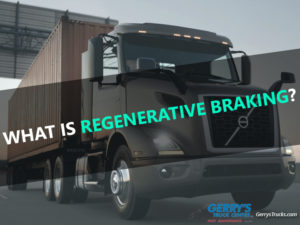What is regenerative braking?
- August 18, 2022
- Blog
- Posted by Derick
- Leave your thoughts
The world we all live in is shifting and changing faster than it likely ever has in the past. It seems that on a daily basis we are relentlessly exposed to new technological innovations, and these innovations come a host of new and often interesting words to help us understand (or further confuse us on) the new technologies.
Having said all of that, the new and interesting word (well actually phrase) we will discuss today, which didn’t exist even just a few years ago, is “regenerative braking.” You are probably well advised to understand this new term for a couple of reasons. First regenerative braking is a technology that will probably soon enough become something everyone is familiar with and perhaps even uses with regularity.
Secondly, it can save you money.
Let’s start with what regenerative braking is. i.e.: the conversion of kinetic energy (vehicle momentum) into electrical energy (stored battery charge) Regenerative braking is a technology that has come to us from the world of both electric and hybrid vehicles. As electric and hybrid vehicles adoption continue to overtake internal combustion engines (gas vehicles) the phrase will become more and more commonplace. Simply put, regenerative braking is a mechanism or system that allows energy to be captured during the act of braking. Once it captures this energy it then turns that energy it into electricity and then uses this new energy to increase the vehicles driving range.
Whenever we explain this to people they immediately counter with “So by using regenerative braking, you’re increasing the vehicles charge level?”. Yes, that is exactly what it is doing. In fact, just to hammer home this point regenerative braking is also sometimes referred to in the automotive industry as “found fuel” or “free fuel” because you are effectively sending this energy back to the battery.
The immediate next question people follow up with is “Great! how much energy or charge does this add back to the rigs batteries?”. While it can vary depending upon what you are driving when it comes to the Volvo VNR electric vehicle if you utilize the system optimally (yes there is a small degree of skill to optimize this process) you can recapture up to 15% of the energy and return that back into your batteries, which can make a massive difference. The more you’re stopping and starting, the more opportunity there is to regenerate energy. So not only do electric rigs automatically save a fortune in fuel costs when compared to combustion vehicles, when you add in regenerative braking it only makes it even better.


